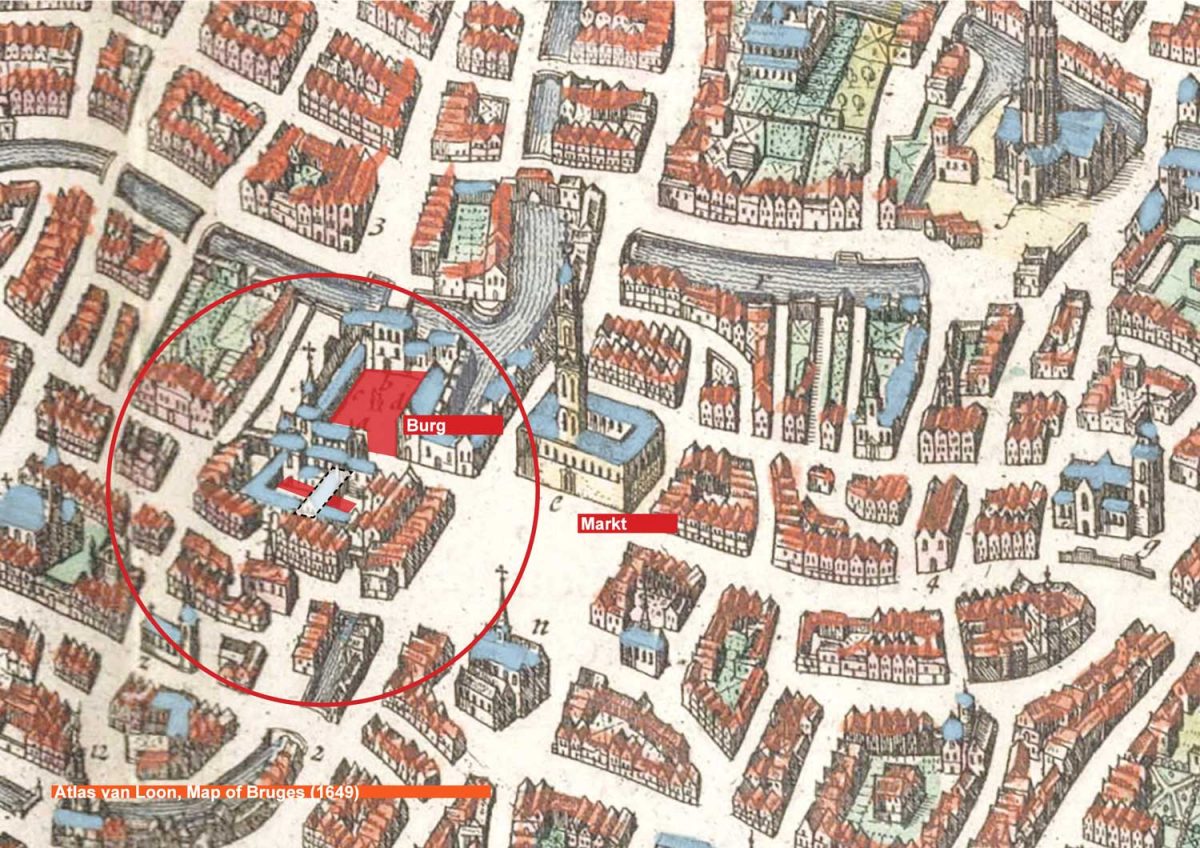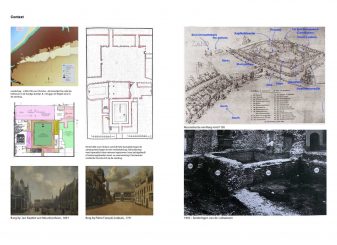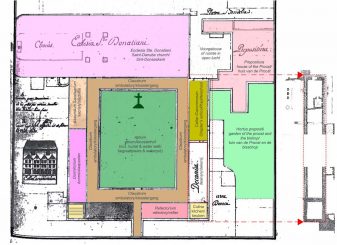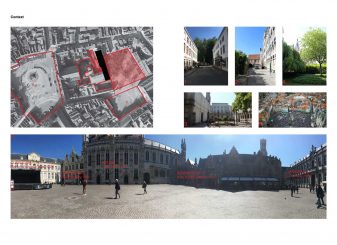Burg
Burg
2019-2020
Type of assignment
Research project
Historical research
Description
A spatial-historical analysis provides insight into the development of the form, the program and the use of a location / building. It can provide the basis for architectural interventions that (re-/)uncover a social / cultural potential and / or enable (re-)integration in the urban fabric.
In Bruges, Burg was the cradle of its birth, when a castle with ramparts and fortified walls was built here in the 9th century. Burg 4 dates back at least to the 12th century, when it was part of the west wing of the St. Donaas canon monastery.
The demolition in 1963 of the "culina tower" in Burg 4, the original corner tower that served as a kitchen in the monastery, is known as one of the black pages in the archaeological history of Bruges. Since then, this anonymous stately building stands there in the characteristic style of "Bridges and Roads".
Our historical research sheds light on the evolution of Burg as the epicenter of the origins of Bruges. From the kilometers-long sand ridge that formed at the end of the last Ice Age to the results of the recent archaeological excavations at Burg 4. Maps and plans of, among others, the demolished Sint-Donaas canon monastery and the Saint-Donaas cathedral were analyzed in relation to their location from Burg 4. Paintings, photos, archaeological studies and theses support the spatial analyzes for possible urban planning interventions.
Results
Historical research booklet
Client
Private investor
Partnership
OMA Rotterdam




